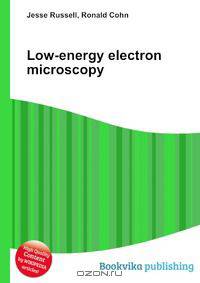Поиск книг, учебников, пособий в онлайн-магазинах

Low-energy electron microscopy
Автор: Jesse Russell, 88 стр., издатель: "Книга по Требованию", ISBN: 978-5-5147-9648-9High Quality Content by WIKIPEDIA articles! Low-energy electron microscopy, or LEEM, is an analytical surface science technique invented by Ernst Bauer in 1962, however, not fully developed (by Ernst Bauer and Wolfgang Telieps) until 1985. LEEM is a technique used by surface scientists to image atomically clean surfaces, atom-surface interactions, and thin (crystalline) films. In LEEM, high-energy electrons (15-20 keV) are emitted from an electron gun, focused using a set of condenser optics, and sent through a magnetic beam deflector (usually 60? or 90?). The "fast” electrons travel through an objective lens and begin decelerating to low energies (1-100 eV) near the sample surface because the sample is held at a potential near that of the gun. The low-energy electrons are now termed "surface-sensitive” and the near-surface sampling depth can be varied by tuning the energy of the incident electrons (difference between the sample and gun potentials minus the work functions of the...
| Под заказ: | ||||
|
|
OZON.ru - 998 руб. |
Перейти 
|
||
Рейтинг книги: 



 5 из 5, 6 голос(-ов).
5 из 5, 6 голос(-ов).




 5 из 5, 6 голос(-ов).
5 из 5, 6 голос(-ов).



